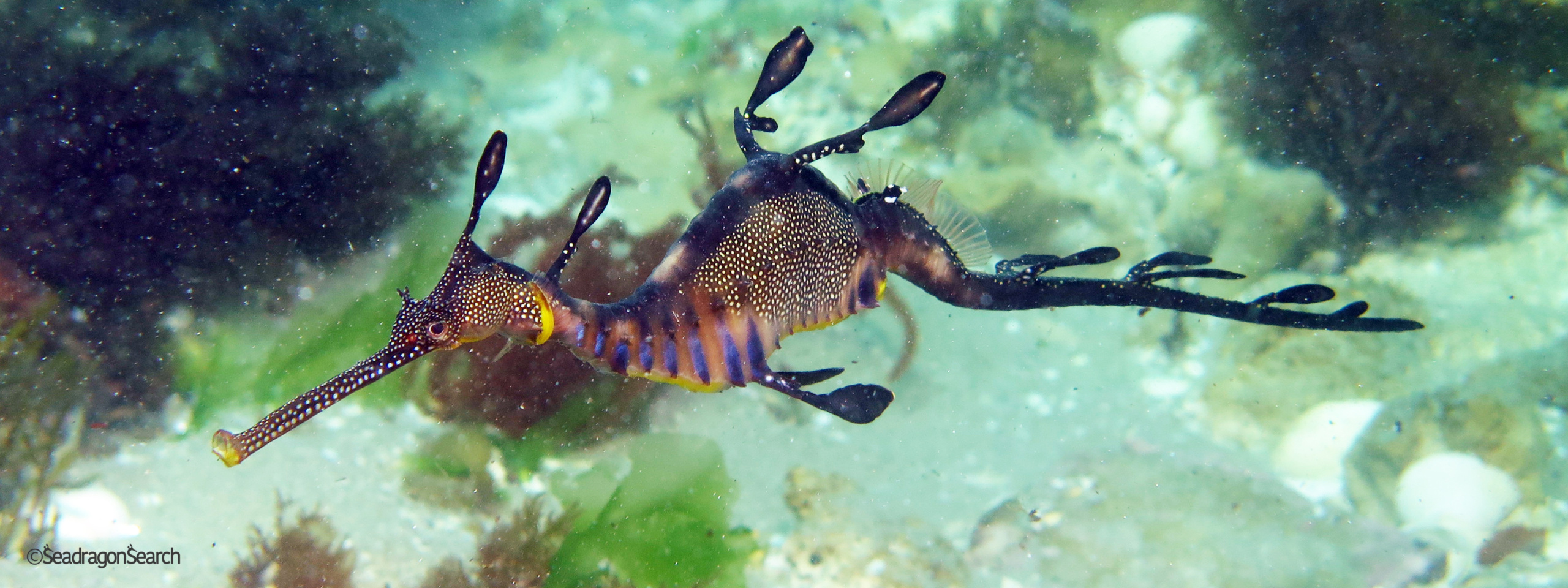Members of the SeadragonSearch team from New South Wales and Victoria have recently published a new weedy seadragon genetics study, led by core team member Dr. Selma Klanten. The new study has used nuclear DNA to examine genetic similarities and differences between weedy seadragon populations across New South Wales, Victoria, and Tasmania. Dr. Klanten’s team uncovered valuable information about the structure of these populations, confirming some previous results with a more robust data set. This data will be important to consider in the future management of east coast seadragon populations.
One of the team’s main findings emphasized significant differences between weedy seadragon populations from the locations studied. Specifically, they found four distinct genetic groups in central New South Wales, southern New South Wales, Victoria, and Tasmania. The Victorian population was especially divergent according to genomic evidence as well as some components of their physical size and shape. This likely stems from past isolation from the other populations, when changes in glaciation caused sea levels to fall and rise, and a narrow land bridge at one time emerged to separate the regions in question.
The Victorian population of seadragons is unique in other ways as well. These dragons are often targeted for collection and distribution into the aquarium industry, so captive weedies tend to be genetic representatives of this group. Dr. Klanten’s team is interested in delving more deeply into the ways in which Victorian seadragons are distinct from other populations, including the extent of their reproductive isolation from other areas. Reproductive habits and the resulting genetic diversity of specific groups can have significant impacts on the resilience of populations to stressors in the environment. Aquariums, in addition to what may be limited genetic representation, have historically struggled to breed seadragons in captivity, which underscores the importance of protecting wild populations.
The team recommends that each population from the study should be managed separately by their respective states, with especially Victorian weedy seadragons being managed as a separate population from those in New South Wales and Tasmania. Each population is distinct and therefore has unique needs. Given the trends seen in the data thus far, with low genetic diversity, limited gene flow between populations, and the need for more data, a precautionary approach is recommended.
Other authors on the new paper include core team members Kade Mills and Dr. David Booth, as well as key SeadragonSearch contributors Kris O’Keeffe and John Turnbull of the Underwater Research Group of New South Wales. Be sure to dive into the details of the team’s study here, and learn more about why studying genetic diversity is important for conservation here!

